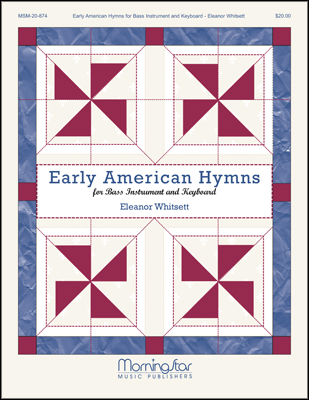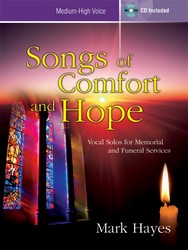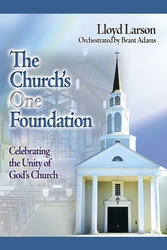- |
User Links
Amazing grace! (how sweet the sound)

Amazing grace! (how sweet the sound)
Author: John Newton (1779)Tune: NEW BRITAIN
Confession Songs
Published in 1417 hymnals
Printable scores: PDF, MusicXMLPlayable presentation: Lyrics only, lyrics + musicAudio files: MIDI, Recording
Representative Text
1 Amazing grace (how sweet the sound)
that saved a wretch like me!
I once was lost, but now am found,
was blind, but now I see.
2 'Twas grace that taught my heart to fear,
and grace my fears relieved;
how precious did that grace appear
the hour I first believed!
3 Through many dangers, toils and snares
I have already come:
'tis grace has brought me safe thus far,
and grace will lead me home.
4 The Lord has promised good to me,
his word my hope secures;
he will my shield and portion be
as long as life endures.
5 Yes, when this flesh and heart shall fail,
and mortal life shall cease:
I shall possess, within the veil,
a life of joy and peace.
6 The earth shall soon dissolve like snow,
the sun forbear to shine;
but God, who called me here below,
will be forever mine.
Ancient & Modern, 2013
Author: John Newton
 John Newton (b. London, England, 1725; d. London, 1807) was born into a Christian home, but his godly mother died when he was seven, and he joined his father at sea when he was eleven. His licentious and tumultuous sailing life included a flogging for attempted desertion from the Royal Navy and captivity by a slave trader in West Africa. After his escape he himself became the captain of a slave ship. Several factors contributed to Newton's conversion: a near-drowning in 1748, the piety of his friend Mary Catlett, (whom he married in 1750), and his reading of Thomas à Kempis' Imitation of Christ. In 1754 he gave up the slave trade and, in association with William Wilberforce, eventually became an ardent abolitionist. After becoming a tide… Go to person page >
John Newton (b. London, England, 1725; d. London, 1807) was born into a Christian home, but his godly mother died when he was seven, and he joined his father at sea when he was eleven. His licentious and tumultuous sailing life included a flogging for attempted desertion from the Royal Navy and captivity by a slave trader in West Africa. After his escape he himself became the captain of a slave ship. Several factors contributed to Newton's conversion: a near-drowning in 1748, the piety of his friend Mary Catlett, (whom he married in 1750), and his reading of Thomas à Kempis' Imitation of Christ. In 1754 he gave up the slave trade and, in association with William Wilberforce, eventually became an ardent abolitionist. After becoming a tide… Go to person page >Text Information
Related Texts
| First Line: | Amazing grace! (how sweet the sound) |
| Author: | John Newton (1779) |
| Meter: | 8.6.8.6 |
| Language: | English |
| Notes: | French translation: "Grâce infinie, ô quel beau don" by Sida Hodoroabǎ; Polish translation: See "Cudowna Boża łaska ta"; Spanish translation: See "Divina gracia, qué amor" by Barbara C. Mink, "Sublime gracia del Señor" by Cristóbal E. Morales; Swahili translation: See "Katika neema ya Yesu" |
| Copyright: | Public Domain |
| Liturgical Uses: | Communion Songs, Confession Songs |
| Article: | Amazing Grace: a journey in time and faith by David Douglas (from "The Hymn") |
- (hymns)
- (hymns)
- (hymns)
- (hymns)
- (hymns)
- (hymns)
- (hymns)
- (hymns)
- (hymns)
- (hymns)
- (hymns)
- (hymns)
- (hymns)
- (hymns)
- (hymns)
- (hymns)
- (hymns)
- (hymns)
- (hymns)
- (hymns)
- (hymns)
- (hymns)
- (hymns)
- (hymns)
- (hymns)
- (hymns)
- (hymns)
- (hymns)
- (hymns)
- (hymns)
- (hymns)
- (hymns)
- (hymns)
- (hymns)
- (hymns)
- (hymns)
- (hymns)
- (hymns)
- (hymns)
- (hymns)
- (hymns)
- (hymns)
- (hymns)
- (hymns)
- (hymns)
- (hymns)
- (hymns)
- (hymns)
- (hymns)
- (hymns)
- (hymns)
- (hymns)
- (hymns)
- (hymns)
- (hymns)
- (hymns)
- (hymns)
- (hymns)
- (hymns)
- (hymns)
- (hymns)
- (hymns)
- (hymns)
- (hymns)
- (hymns)
- (hymns)
- (hymns)
- (hymns)
- (hymns)
- (hymns)
- (hymns)
- (hymns)
- (hymns)
- (hymns)
- (hymns)
- (hymns)
- (hymns)
- (hymns)
- (hymns)
- Year A, Christmas Season, Second Sunday after Christmas Day
This is recommended for Year A, Christmas Season, Second Sunday after Christmas Day by 2 hymnal lectionary indexes including Lift Up Your Hearts: psalms, hymns, and spiritual songs #691. - Year A, Epiphany Season, Ninth Sunday
This is recommended for Year A, Epiphany Season, Ninth Sunday by 2 hymnal lectionary indexes including Glory to God: the Presbyterian Hymnal #649. - Year A, Lent, Ash Wednesday
This is recommended for Year A, Lent, Ash Wednesday by 2 hymnal lectionary indexes including Glory to God: the Presbyterian Hymnal #649. - Year A, Lent, First Sunday
This is recommended for Year A, Lent, First Sunday by 2 hymnal lectionary indexes including Glory to God: the Presbyterian Hymnal #649. - Year A, Lent, First Sunday
- Year A, Lent, Third Sunday
Related to Romans 5 (National Association of Pastoral Musicians) - Year A, Lent, Fourth Sunday
This is recommended for Year A, Lent, Fourth Sunday by 3 hymnal lectionary indexes including Lift Up Your Hearts: psalms, hymns, and spiritual songs #691. - Year A, Lent, Fourth Sunday
Related to John 9 (National Association of Pastoral Musicians) - Year A, Ordinary Time, Proper 15 (20)
This is recommended for Year A, Ordinary Time, Proper 15 (20) by 3 hymnal lectionary indexes including Glory to God: the Presbyterian Hymnal #649 and Lift Up Your Hearts: psalms, hymns, and spiritual songs #691. - Year A, Ordinary Time, Proper 16 (21)
- Year A, Ordinary Time, Proper 19 (24)
This is recommended for Year A, Ordinary Time, Proper 19 (24) by 2 hymnal lectionary indexes including Lift Up Your Hearts: psalms, hymns, and spiritual songs #691. - Year A, Ordinary Time, Thanksgiving Day
This is recommended for Year A, Ordinary Time, Thanksgiving Day by 3 hymnal lectionary indexes including Glory to God: the Presbyterian Hymnal #649 and Lift Up Your Hearts: psalms, hymns, and spiritual songs #691. - Year B, Christmas season, Second Sunday after Christmas Day
This is recommended for Year B, Christmas season, Second Sunday after Christmas Day by 2 hymnal lectionary indexes including Lift Up Your Hearts: psalms, hymns, and spiritual songs #691. - Year B, Epiphany season, Third Sunday
- Year B, Epiphany season, Sixth Sunday
This is recommended for Year B, Epiphany season, Sixth Sunday by 2 hymnal lectionary indexes including Lift Up Your Hearts: psalms, hymns, and spiritual songs #691. - Year B, Lent, Ash Wednesday
This is recommended for Year B, Lent, Ash Wednesday by 2 hymnal lectionary indexes including Glory to God: the Presbyterian Hymnal #649. - Year B, Lent, Fourth Sunday
This is recommended for Year B, Lent, Fourth Sunday by 3 hymnal lectionary indexes including Lift Up Your Hearts: psalms, hymns, and spiritual songs #691. - Year B, Ordinary Time, Proper 8 (13)
- Year B, Ordinary Time, Proper 10 (15)
This is recommended for Year B, Ordinary Time, Proper 10 (15) by 3 hymnal lectionary indexes including Glory to God: the Presbyterian Hymnal #649 and Lift Up Your Hearts: psalms, hymns, and spiritual songs #691. - Year B, Ordinary Time, Proper 13 (18)
- Year C, Epiphany season, Fifth Sunday
This is recommended for Year C, Epiphany season, Fifth Sunday by 2 hymnal lectionary indexes including Glory to God: the Presbyterian Hymnal #649. - Year C, Epiphany season, Fifth Sunday
- Year C, Lent, Third Sunday
This is recommended for Year C, Lent, Third Sunday by 2 hymnal lectionary indexes including Glory to God: the Presbyterian Hymnal #649. - Year C, Lent, Fourth Sunday
This is recommended for Year C, Lent, Fourth Sunday by 2 hymnal lectionary indexes including Glory to God: the Presbyterian Hymnal #649 and Lift Up Your Hearts: psalms, hymns, and spiritual songs #691. - Year C, Holy Week season, Tuesday of Holy Week
- Year C, Ordinary Time, Trinity Sunday
This is recommended for Year C, Ordinary Time, Trinity Sunday by 2 hymnal lectionary indexes. - Year C, Ordinary Time, Proper 19 (24)
This is recommended for Year C, Ordinary Time, Proper 19 (24) by 4 hymnal lectionary indexes including Glory to God: the Presbyterian Hymnal #649 and Lift Up Your Hearts: psalms, hymns, and spiritual songs #691. - Year C, Ordinary Time, Proper 19 (24)
Cherokee
Cheyenne
Chinese
Chinese (Mandarin)
Choctaw
Cree
Creek
Engish
English
- 112 Familiar Hymns and Gospel Songs #89
- 20th Century Gospel Songs #56
- 50 Sacred Favorites #50
- A Baptist Hymn Book, Designed Especially for the Regular Baptist Church and All Lovers of Truth #d24
- A Book of Worship for the Use of the Evangelical Lutheran Church ... of the Church of the Redeemer, Richmond, Virginia #d5
- A Choice Selection of Hymns and Spiritual Songs for the use of the Baptist Church and all lovers of song #405
- A Choice Selection of Psalms, Hymns and Spiritual Songs for the use of Christians #209
- A Collection of Evergreen Hymns, for All the People. New ed. #d6
- A Collection of Hymns and Spiritual Songs, Generally Used at Camp and Prayer Meetings #d10
- A Collection of Hymns for Public, Social and Domestic Worship #d26 10 shown out of 940
French
Hausa
Inuktitut
Japanese
Kiowa
Korean
Mohawk
Navajo
Northern Ojibway
Ojibway
Plains Cree
Spanish
Notes
Scripture References:
all st. = Eph. 1:3-14
st. 1 = Eph. 2:8, John 9:25
st. 3 = Ps. 142:5
One of the best loved and most often sung hymns in North America, this hymn expresses John Newton's personal experience of conversion from sin as an act of God's grace. At the end of his life, Newton (b. London, England, 1725; d. London, 1807) said, “There are two things I'll never forget: that I was a great sinner, and that Jesus Christ is a greater Savior!” This hymn is Newton's spiritual autobiography, but the truth it affirms–that we are saved by grace alone–is one that all Christians may confess with joy and gratitude.
Newton was born into a Christian home, but his godly mother died when he was seven, and he joined his father at sea when he was eleven. His licentious and tumultuous sailing life included a flogging for attempted desertion from the Royal Navy and captivity by a slave trader in West Africa. After his escape he himself became the captain of a slave ship. Several factors contributed to Newton's conversion: a near-drowning in 1748, the piety of his friend Mary Catlett, (whom he married in 1750), and his reading of Thomas à Kempis' Imitation of Christ. In 1754 he gave up the slave trade and, in association with William Wilberforce, eventually became an ardent abolitionist. After becoming a tide-surveyor in Liverpool, England, Newton came under the influence of George Whitefield and John and Charles Wesley (PHH 267) and began to study for the for the ministry. He was ordained in the Church of England and served in Olney (1764-1780) and St. Mary Woolnoth, London (1780-1807). His legacy to the Christian church includes his hymns as well as his collaboration with William Cowper (PHH 434) in publishing Olney Hymns (1779), to which Newton contributed 280 hymns, including “Amazing Grace.”
"Amazing Grace" was published in six stanzas with the heading "1 Chronicles 17:16-17, Faith's review and expectation."
Four of his original stanzas are included in the Psalter Hymnal along with a fifth anonymous and apocalyptic stanza first found in A Collection of Sacred Ballads (1790). The fifth stanza was first published separately in the 1859 edition of The Sacred Harp and joined to Newton's text in Edwin O. Excell's Coronation Hymns (1910); it has been associated with Newton's text ever since. The Hymnal 1982 Companion calls it "an example of a 'wandering' stanza in [common meter] that appears at the end of a variety of hymns in nineteenth-century hymnals" (Vol. Three B, 671).
Liturgical Use:
Many occasions of worship when we need to confess with joy that we re saved by God's grace alone; as a hymn of response to forgiveness of sin or as an assurance of pardon; as a confession of faith or after the sermon.
--Psalter Hymnal Handbook
===================
Amazing grace, how sweet the sound. J. Newton. [Grace.] No. 41, Book i. of the Olney Hymns, 1779, in 6 stanzas of 4 lines, entitled "Faith's Review and Expectation," and based upon i. Chron. xviii. 16, 17. In Great Britain it is unknown to modern collections, but in America its use is extensive. It is far from being a good example of Newton's work.
-- John Julian, Dictionary of Hymnology (1907)
Tune
NEW BRITAINNEW BRITAIN (also known as AMAZING GRACE) was originally a folk tune, probably sung slowly with grace notes and melodic embellishments. Typical of the Appalachian tunes from the southern United States, NEW BRITAIN is pentatonic with melodic figures that outline triads. It was first published as a hy…
For Leaders
Text:
Newton was ordained for ministry in the Church of England in the early 1760s, and in 1779, collaborated with William Cowper to publish the Olney Hymns, one of whch was the now famous "Amazing Grace." Originally titled “Faith’s Review and Expectations,” Newton’s hymn included six stanzas. Most hymnals today use the first four stanzas from Newton’s text, as well as a fifth anonymous stanza first found in A Collection of Sacred Ballads (1790), and sung along with Newton’s text ever since. The original text has not been much altered, though some additions have been made – Chris Tomlin’s added refrain, for example: “My chains are gone, I’ve been set free - my God my Savior has ransomed me. And like a flood, his mercy reigns; unending love, amazing grace.”
Tune:
The Appalachian tune NEW BRITAIN first appeared in Southern Harmony; in a later edition, it was also evidently set to Newton’s text for the first time. The modern harmonization is credited to Edwin Othello Excell, who is also credited with first attaching the final stanza in his 1910 Coronation Hymns.
One of, if not the most popular hymn in the United States, this hymn has been performed by countless artists and arranged to many different styles. Because of its simple folk melody, it can be sung as a round, and it also works well to sing at least one verse a cappella.
When/Why/How:
“Amazing Grace” is a powerful hymn of profession of God’s grace and mercy, and can be sung throughout the liturgical year. It could be sung as a hymn of response to the assurance of pardon, as a confession of faith, or after a sermon on salvation or grace. It’s also often sung as a hymn of comfort in times of distress, and so could work well as a response to lament, or as a hymn of assurance at funerals.
Some songs that could be paired with this hymn in a worship service are “Grace Unmeasured” by Sovereign Grace Ministries, “Your Grace Is Enough” by Chris Tomlin, “When I think about the Lord” by Hillsong United, and so many more songs that speak about Christ’s redemptive work in us.
- Chris Tomlin's version Amazing Grace (My Chains Are Gone) arranged for choir by Joel Raney
- Simpson-Curenton, Evelyn. Amazing Grace for SATB choir
- Lamb, Linda R. Amazing Grace (My Chains Are Gone) arranged for Handbells
- Near, Gerald. Three Gospel Preludes for Organ
- McDonald, Mary and Larry Shackley. Powerful Praise (Contemporary worship songs for organ and piano)
Laura de Jong, Hymnary.org
Timeline
Arrangements
Media
Psalter Hymnal (Gray) #462
The United Methodist Hymnal #378
- MIDI file from Baptist Hymnal 1991 #330
- Audio recording from Baptist Hymnal 1991 #330
- MIDI file from Baptist Hymnal 1991 #330
- Audio recording from Celebrating Grace Hymnal #587
- MIDI file from The Cyber Hymnal #144
- Audio recording from Evangelical Lutheran Worship #779
- MIDI file from The Great Awakening: a choice collection of new and standard gospel songs #68
- Audio recording from Glory to God: the Presbyterian Hymnal #649
- MIDI file from The King of Kings: a choice collection of gospel songs, standard hymns, choruses, children's songs, solos, duets, and quartets together with responsive readings for use in evangelistic meetings... #10
- Audio recording from Lift Up Your Hearts: psalms, hymns, and spiritual songs #691
- Audio recording from Lift Up Your Hearts: psalms, hymns, and spiritual songs #691
- Audio recording from Lift Up Your Hearts: psalms, hymns, and spiritual songs #691
- Audio recording from Lift Up Your Hearts: psalms, hymns, and spiritual songs #691
- Audio recording from Lift Up Your Hearts: psalms, hymns, and spiritual songs #691
- MIDI file from The Old Story in Song Number Two #53
- Audio recording from Psalter Hymnal (Gray) #462
- MIDI file from Psalter Hymnal (Gray) #462
- MIDI file from Psalter Hymnal (Gray) #462
- Audio recording from Small Church Music #1
- Audio recording from Small Church Music #1
- Audio recording from The Southern Harmony, and Musical Companion (New ed. thoroughly rev. and much enl.) #8
- Audio recording from The Southern Harmony, and Musical Companion (New ed. thoroughly rev. and much enl.) #8
- MIDI file from The Southern Harmony, and Musical Companion (New ed. thoroughly rev. and much enl.) #8
- Audio recording from Trinity Hymnal (Rev. ed.) #460
- MIDI file from TTT-Himnaro Cigneta #507
- MIDI file from Timeless Truths #556
- Audio recording from The Worshiping Church #502
- MIDI file from The United Methodist Hymnal #378
- Audio recording from The United Methodist Hymnal #378
- MIDI file from Worship and Rejoice #422


 My Starred Hymns
My Starred Hymns








